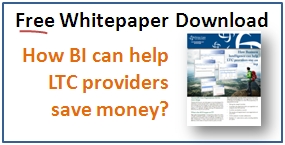 Ignorance is no excuse. Over the last few months, like me, I’m sure you’ve seen headlines and read articles about the federal crackdown on Medicare and Medicaid fraud. Millions of dollars have been identified as fraudulently paid for services either not rendered or with limited justification. I acknowledge that there are unscrupulous practitioners and providers out there who should be identified, indicted, convicted, and sentenced to the fullest extent the law allows. However, while I don’t have the numbers, I wonder to what extent “fraud” was committed by those who unwittingly engage in poor billing practices, such as miscoding and/or absence of support documentation for procedures provided. Ignoring the old adage that if you didn’t document it, it didn’t happen, may put providers and practitioners at risk of investigation and indictment with all the attendant negative results, such as loss of reputation, decline in confidence, and possibly business failure.
Ignorance is no excuse. Over the last few months, like me, I’m sure you’ve seen headlines and read articles about the federal crackdown on Medicare and Medicaid fraud. Millions of dollars have been identified as fraudulently paid for services either not rendered or with limited justification. I acknowledge that there are unscrupulous practitioners and providers out there who should be identified, indicted, convicted, and sentenced to the fullest extent the law allows. However, while I don’t have the numbers, I wonder to what extent “fraud” was committed by those who unwittingly engage in poor billing practices, such as miscoding and/or absence of support documentation for procedures provided. Ignoring the old adage that if you didn’t document it, it didn’t happen, may put providers and practitioners at risk of investigation and indictment with all the attendant negative results, such as loss of reputation, decline in confidence, and possibly business failure.
If this falls within the reasonable realm of plausible possibility, I have to scratch my head and wonder why. Why place your business and your future at risk, when you don’t have to? Once again, IT can come to the rescue. Imagine the peace of mind you could have while reducing your DSO, assuming you are at risk not for lack of integrity, but credibility, if your organization had a billing and claims management system that would file clean claims each and every time.
Such an automated revenue cycle management system exists, specifically designed for long term care providers. Imagine a system comprised of a comprehensive and configurable user-friendly web portal to manage claims throughout the submission process, with functions for loading, reviewing, editing, and tracking claims online. With this portal, providers can fully leverage enterprise-level security and permissions with user-definable roles to satisfy their specific claims processing practices. As part of a complete health care transaction solution, providers can submit, monitor, edit claims, and review their claims on-line.
Key benefits of the ProClaim Partner’s application:
- Increased revenue stream and reduced DSO through quick claims turn-around and real-time claims management reporting viewable through a user-defined digital dashboard
-
Smoother claims flow through direct connections with providers, trading partners, and value-added networks
-
Eliminating avoidable payment delays by increasing successful first-pass rates, tracking claims, and automatically checking claim status
-
Reduced transaction fees and paper handling costs by enabling direct connection with providers and payers
-
Decreased operations costs through automated handling of routine questions and documentation requests associated with eligibility, claims status, and referrals
-
Preserving investments in existing systems by offering an off-the-shelf claims management application that easily interfaces with existing adjudication, financial, and membership systems
-
Reduced risk through its robust user audit functionality
Providers would be well rewarded for looking into it. In times like these and under this “gotcha” environment of fraud crackdown, doing billing right certainly has its virtues. But a system is only as good as the workflow that leads to the filing of claims – preadmissions screening and documentation; admissions documentation; clinical documentation; therapy services documentation; proper coding; charges compiled; and claims created, scrubbed, triple checked, filed, and monitored. All are critical components of the workflow and are at risk of vital data and information leakage.
In the next blog, we’ll discuss some of these workflow components which are considered industry best practices.
Question: What solid claims management practices have you observed or implemented?
/Prime-Care-Technologies-Logo.png?width=191&height=55&name=Prime-Care-Technologies-Logo.png)

 Leaders who are really successful are those who are accountable and hold others accountable. Over the years I have served in several leadership positions in this amazing industry/profession, we call Long Term Care, and have observed many who live the principle of accountability. The more precise the terms of the accountability, the more effective the leader and the team he or she leads. You may think it odd that in a technology blog, you would read about leadership, but be patient. There is an IT-related point to this.
Leaders who are really successful are those who are accountable and hold others accountable. Over the years I have served in several leadership positions in this amazing industry/profession, we call Long Term Care, and have observed many who live the principle of accountability. The more precise the terms of the accountability, the more effective the leader and the team he or she leads. You may think it odd that in a technology blog, you would read about leadership, but be patient. There is an IT-related point to this. Rendering an accounting has been a periodic, often formal event. But the nature of that “rendering” has changed. In the past, when all things were paper based, either the leader prepared or relied on someone else to prepare documentation/reports targeting specific responsibilities – a time-consuming and laborious process. What’s more, it was very much after the fact. As I sat in on monthly P&L reviews or periodic performance reviews, the matters discussed were usually a “day late and a dollar short.” I like the adage that I heard Dr. Wayne Dyer once cite, “I can’t should’ve anything.”
Rendering an accounting has been a periodic, often formal event. But the nature of that “rendering” has changed. In the past, when all things were paper based, either the leader prepared or relied on someone else to prepare documentation/reports targeting specific responsibilities – a time-consuming and laborious process. What’s more, it was very much after the fact. As I sat in on monthly P&L reviews or periodic performance reviews, the matters discussed were usually a “day late and a dollar short.” I like the adage that I heard Dr. Wayne Dyer once cite, “I can’t should’ve anything.”

 B2B e-Commerce or e-Procurement is here to stay.
B2B e-Commerce or e-Procurement is here to stay. Procurement specialists have long been recognized as strategically key players in business, but their roles, like most others in the company, are changing with the advance of technology.
Procurement specialists have long been recognized as strategically key players in business, but their roles, like most others in the company, are changing with the advance of technology.